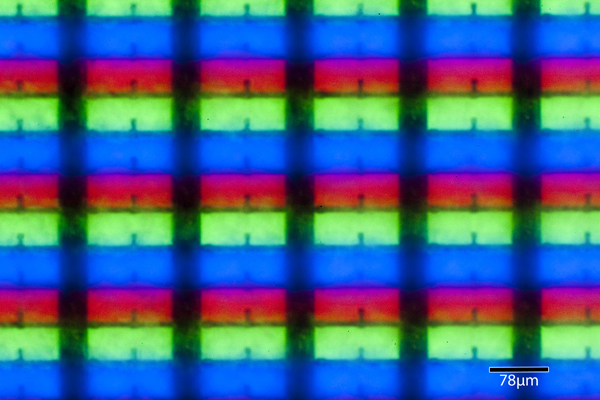Mac Retina Display Games Pixelated
Microsoft says that its first ever laptop, the Surface Book, is the most powerful 13-inch laptop ever made. Apple may have something to say about that.
The Apple MacBook Pro with Retina display is the company's most powerful laptop creation, aimed at power users. But has Microsoft managed to swoop in and deliver an even better machine?
There are still apps that were never updated to retina on the iPhone, and they look very pixelated. Will that happen on the MB Pro retina display? I want to buy one tonight, but I'm worried about this. Like, if I played a game like Amnesia or Sims 3 or Portal on the new MB Pro, would it look.
The Surface Book, on paper, may be the best laptop out there. We've delved into the specs to check just how close these two laptops come to each other.
So which is better, the Microsoft Surface Book or the Apple MacBook Pro with Retina display?
Surface Book has a larger, higher resolution display
Microsoft has crammed as many pixels as it could manage into that 13.5-inch display. While Apple's 13-inch MacBook Pro with Retina display offers an impressive 2,560 x 1,600 resolution for 232ppi, the 13.5-inch Surface Book crams in a 3,000 x 2,000 resolution for 267ppi.
Of course a screen is more than just resolution. But in this area Microsoft has continued to focus its production. The result is a 100 per cent sRGB colour representation and 1800:1 contrast ratio and low glare. Microsoft also uses its new PixelSense technology which essentially means a very thin, closely bonded, glass screen for super responsive touch and stylus controls.
The MacBook Pro with Retina display does not offer a touchscreen and Apple keeps numbers quiet and simply says it has a 'high contrast ratio'.
Surface Book is detachable and lighter but thicker
The MacBook Pro with Retina display is just 18mm thick in spite of cramming in plenty of power and using an all metal chassis.
By comparison the Surface Book, also all metal, offers a detachable screen that doubles as a tablet. But this has meant a slight increase in thickness to nearly 23mm when closed. But it remains lighter at 1.51kg compared to Apple's 1.58kg - not much in it there then.
Surface Book appears more powerful
Both the Surface Book and the MacBook Pro with Retina display offer sixth-gen Intel Core i5 and i7 chips. Both top out at 16GB of RAM and up to 1TB of SSD storage. But it's the graphical power that offers variation.
The 13-inch MacBook Pro with Retina display comes with Intel's onboard Iris Graphics 6100. While the tablet part of the Surface Book is limited to the Intel HD Graphic 520, there is a separate GPU in the keyboard section. This is an Nvidia GeForce processor with 1GB of GDDR5 memory.
READ:MacBook Pro 13-inch with Retina display (early 2015) review: May the Force be with you
Surface Book has a longer battery life
According to specs Microsoft has managed to eek out more battery life from the Surface Book with a 12 hour life. The MacBook Pro with Retina display tops out at 10 hours.
Both of these figures are from the companies though, so until they're tested in real world conditions we're taking them with a pinch of salt. Perhaps that higher number from Microsoft is based on partial time using it as a lower powered tablet, for example.
Connectivity and interaction options are varied but plentiful
Both laptops offer plenty of connectivity options that vary and may appeal to different people's needs.
The Surface Book offers two USB 3.0 ports and full microSD while the MacBook also has the two USB 3.0 but an SDXC card reader.

The MacBook features an HDMI port where the Surface Book is limited to a Mini Display Port. Apple has two Thunderbolt 2 ports while Microsoft offers its SurfaceConnect option.
The cameras on each laptop vary with the Surface Book using a 5-megapixel front-facing camera and the MacBook Pro with Retina display sporting a 720p FaceTime HD camera.
It's Windows or Mac OS
This kind of goes without saying, but we're going to say it anyway.
If you go for the Surface Book you get Microsoft's latest Windows 10 OS with Continuum which lets you jump between devices seamlessly.
Should you opt for the MacBook Pro with Retina display you're going to get Apple's Mac OS X El Capitan.
Whichever you choose probably comes down to tastes and individual needs so we're not going to harp on about this.
MacBook Pro with Retina display is more affordable

Apple has managed to undercut Microsoft here with its MacBook Pro with Retina display starting at $1,300 while the Surface Book starts at $1,500.
At this price the Surface Book and the MacBook Pro with Retina display comes with 128GB storage, Intel i5 processor and 8GB RAM.
READ:Microsoft Surface Book: Everything you need to know about the world's fastest laptop
Mac Retina Display Games Pixelated Free
The pixel density of Retina displays is so high that your eyes can't detect individual pixels at a normal viewing distance. This gives content incredible detail and dramatically improves your viewing experience.
Mac computers that have a Retina display
MacBook Pro models:
- 16-inch MacBook Pro models introduced in 2019. Native resolution: 3072 x 1920 at 226 pixels per inch. Support for millions of colors.
- 15-inch MacBook Pro models introduced in 2012 or later, except the MacBook Pro (15-inch, Mid 2012). Native resolution: 2880 x 1800 at 220 pixels per inch. Support for millions of colors.
- 13-inch MacBook Pro models introduced in late 2012 or later. Native resolution: 2560 x 1600 at 227 pixels per inch. Support for millions of colors.
MacBook Air models introduced in 2018 or later. Native resolution: 2560 x 1600 at 227 pixels per inch. Support for millions of colors.
MacBook models introduced in 2015 or later. Native resolution: 2304 x 1440 at 226 pixels per inch. Support for millions of colors.
iMac models:
- 27-inch iMac models introduced in 2014 or later. Native resolution: 5120 x 2880. Models introduced in 2014 and 2015 support millions of colors, and models introduced in 2017 or later support one billion colors.
- 21.5-inch iMac models introduced in 2015 or later, except the iMac (21.5-inch, 2017) and iMac (21.5-inch, Late 2015). Native resolution: 4096 x 2304. The Retina model introduced in 2015 supports millions of colors, and models introduced in 2017 or later support one billion colors.
All iMac Pro models. Native resolution: 5120 x 2880. Support for one billion colors.
Changing the resolution of your display
Your Mac automatically chooses a default resolution that is optimal for your display. To change the resolution:
- Choose Apple menu > System Preferences.
- Click Displays.
- Select Scaled, then select any of the four or five scaled resolutions, depending on your Mac model. With scaled resolutions, text and objects can appear larger and more visible, or smaller to provide more space for windows and apps.
If you're also using an external display
If you're using an external display to extend your desktop, you can choose a preferred resolution for each display. To see additional resolutions for the external display, press and hold the Option key while selecting the Scaled button.
If you're using an external display to mirror your built-in display, your Mac optimizes for whichever display is selected in the ”Optimize for” pop-up menu. Allow your Mac to choose the best resolution for that display, or select Scaled and choose a different resolution.
When mirroring your displays, you can optimize for the external display instead of your built-in display
Using apps with a Retina display
If an app looks different than you expect on your Retina display or high-resolution external display, try opening the app in low-resolution mode:
- Quit the app.
- Open the Applications folder.
- Click the app once to select it, then choose Get Info from the File menu.
- From the Get Info window that opens, select the checkbox labeled ”Open in Low Resolution.”
- Close the Get Info window and open the app again.
Some apps that work best in low-resolution mode or that work only in low-resolution mode will have this mode already turned on, and in that case you might not be able to turn it off. The app developer might offer an update that includes support for the Retina display.
Using Boot Camp and Windows with a Retina display
Mac Retina Display Games Pixelated Images
- Boot Camp supports resolutions up to 3840 x 2160.
- When your Mac is using the Apple-supplied Windows Support Software, Windows starts up with the maximum dpi (pixels) it supports, which is 144 dpi, or 150-percent magnification. As a result, items on the display appear small, with a lot of space. You can use the Windows Display control panel item to adjust this setting in Windows.